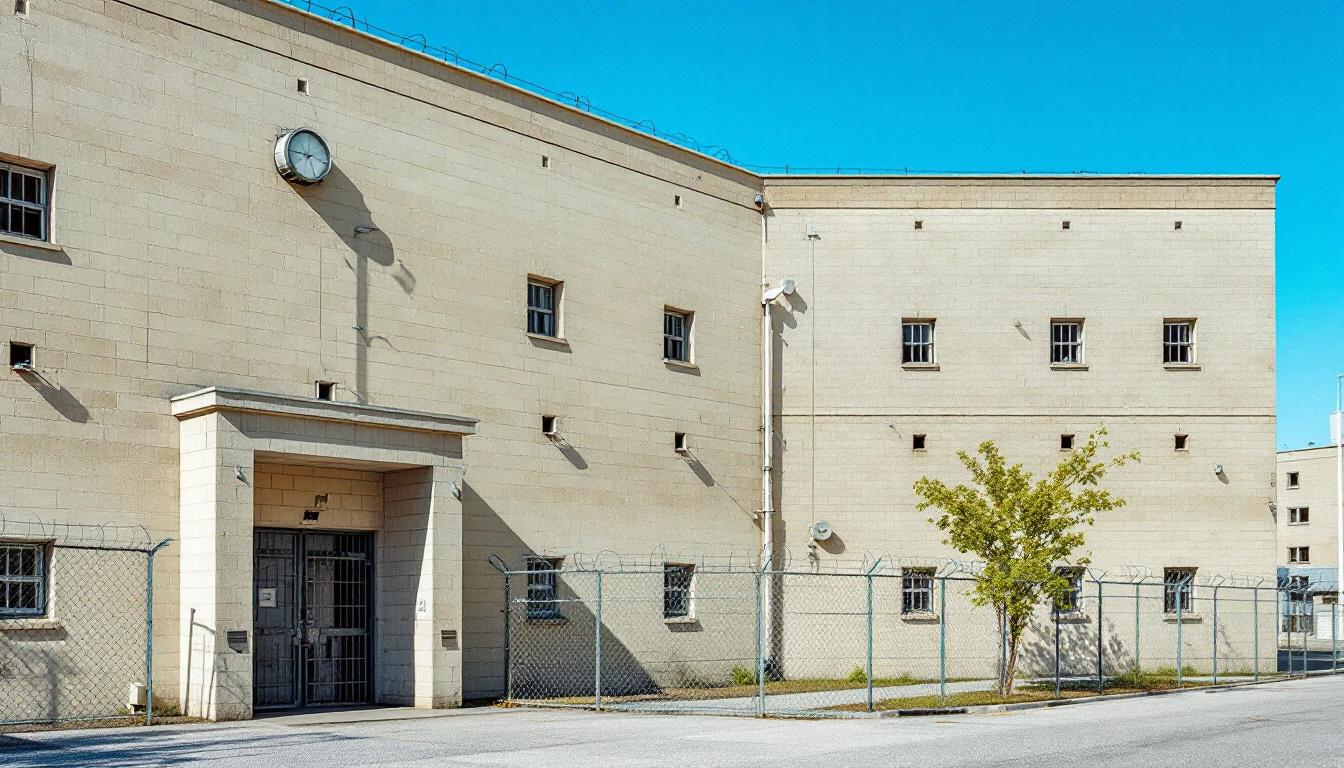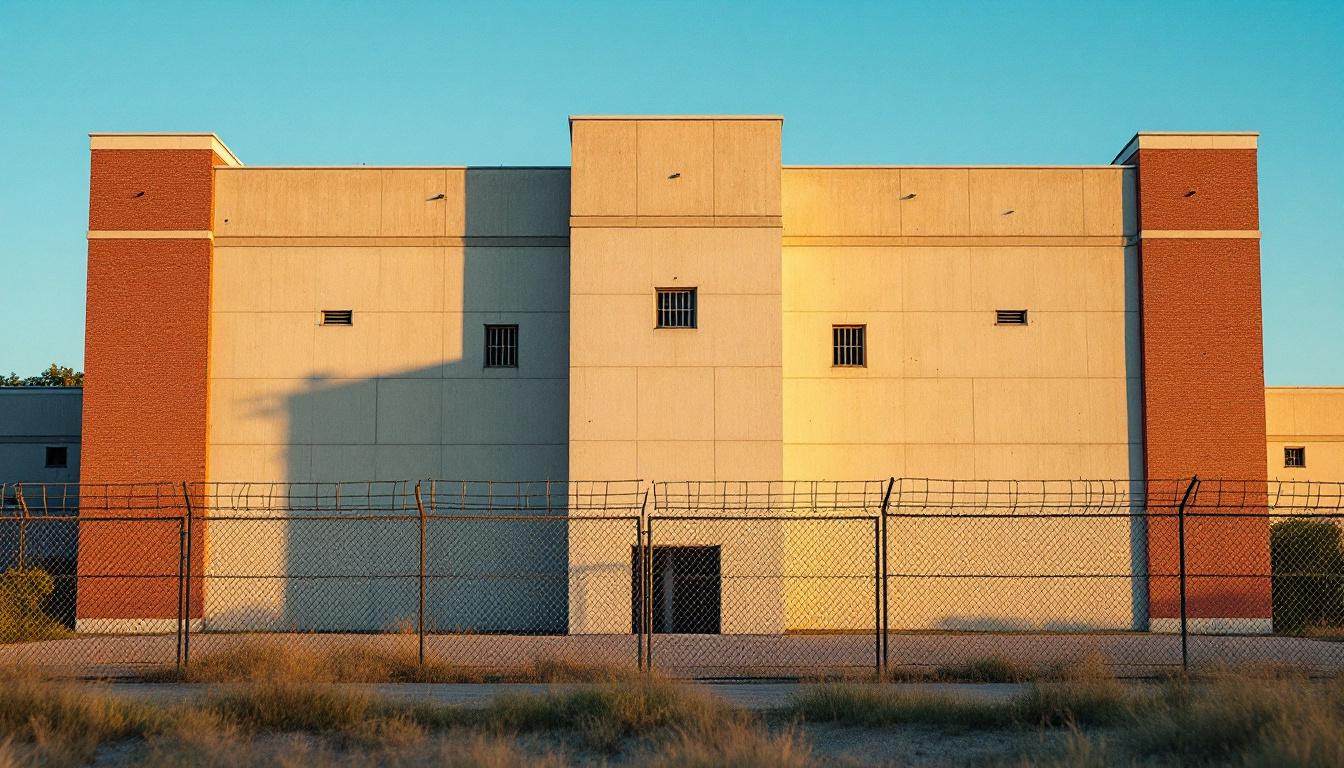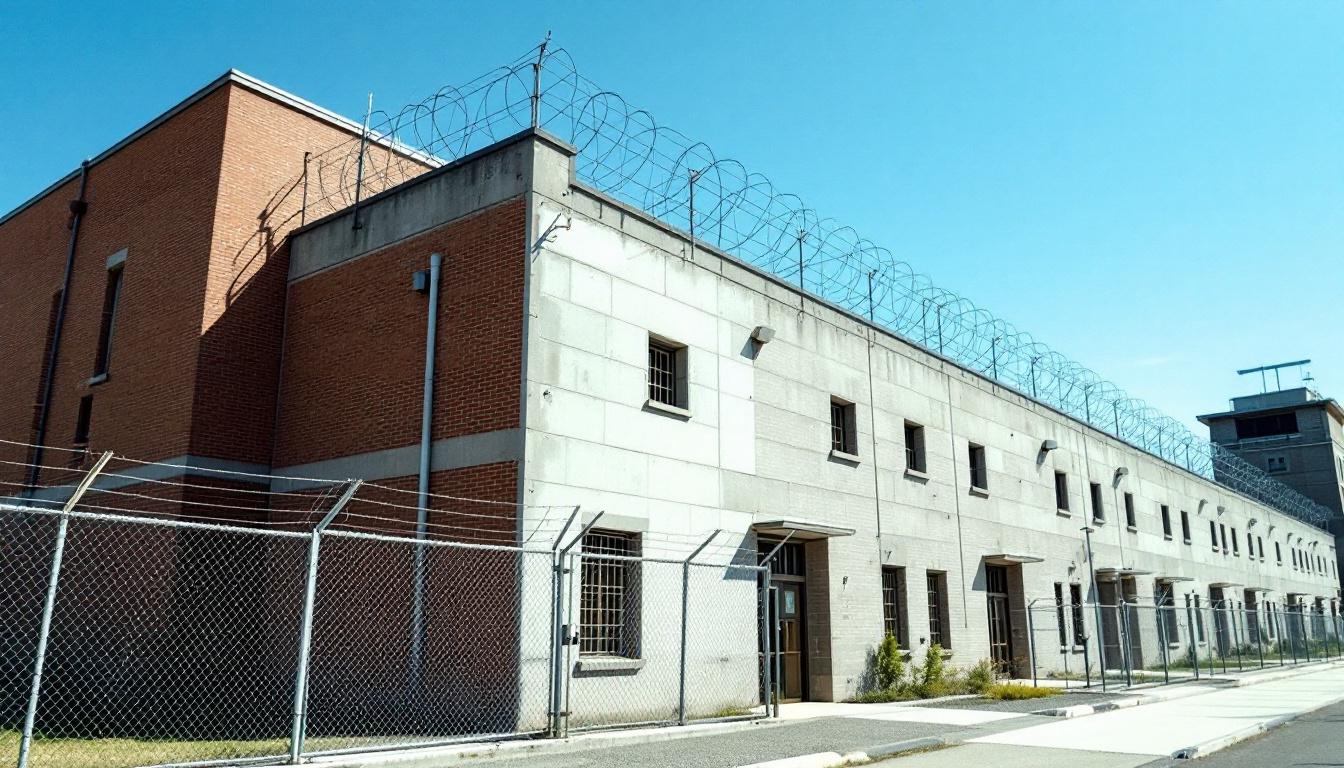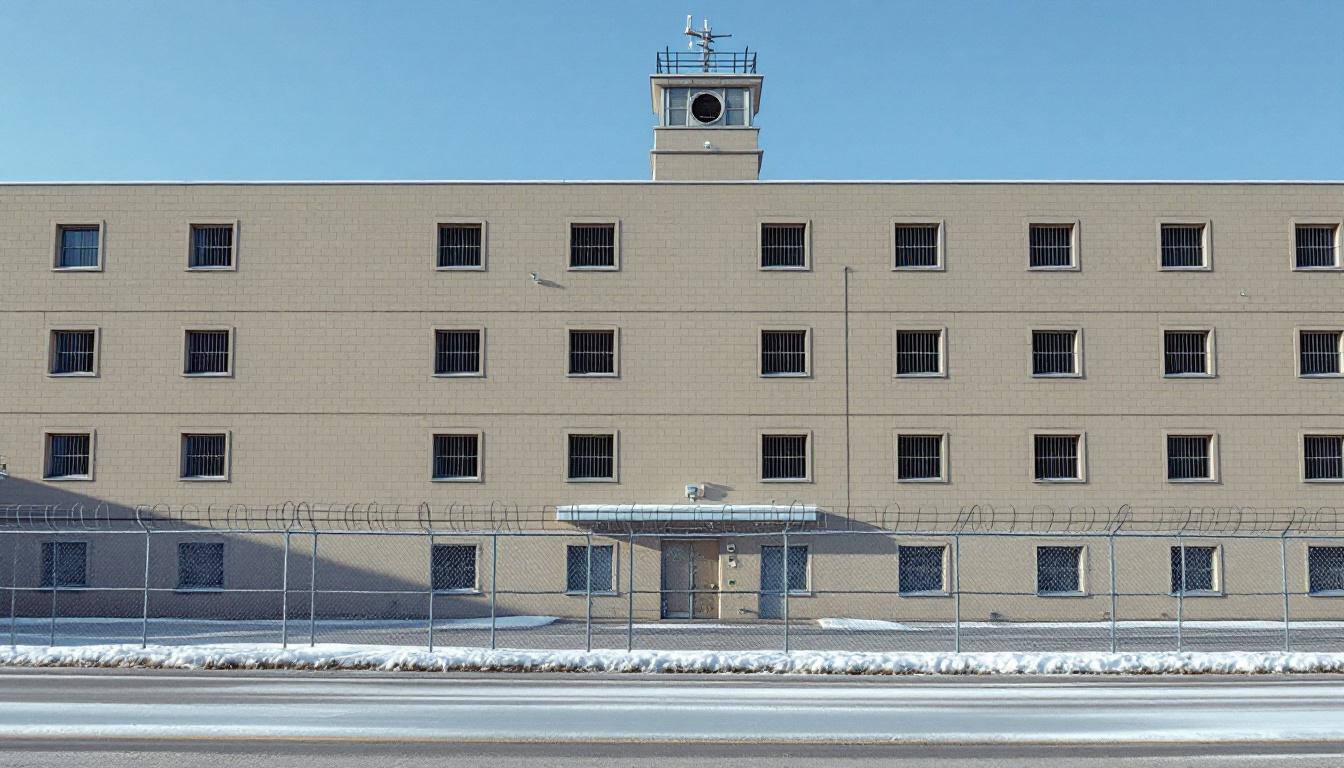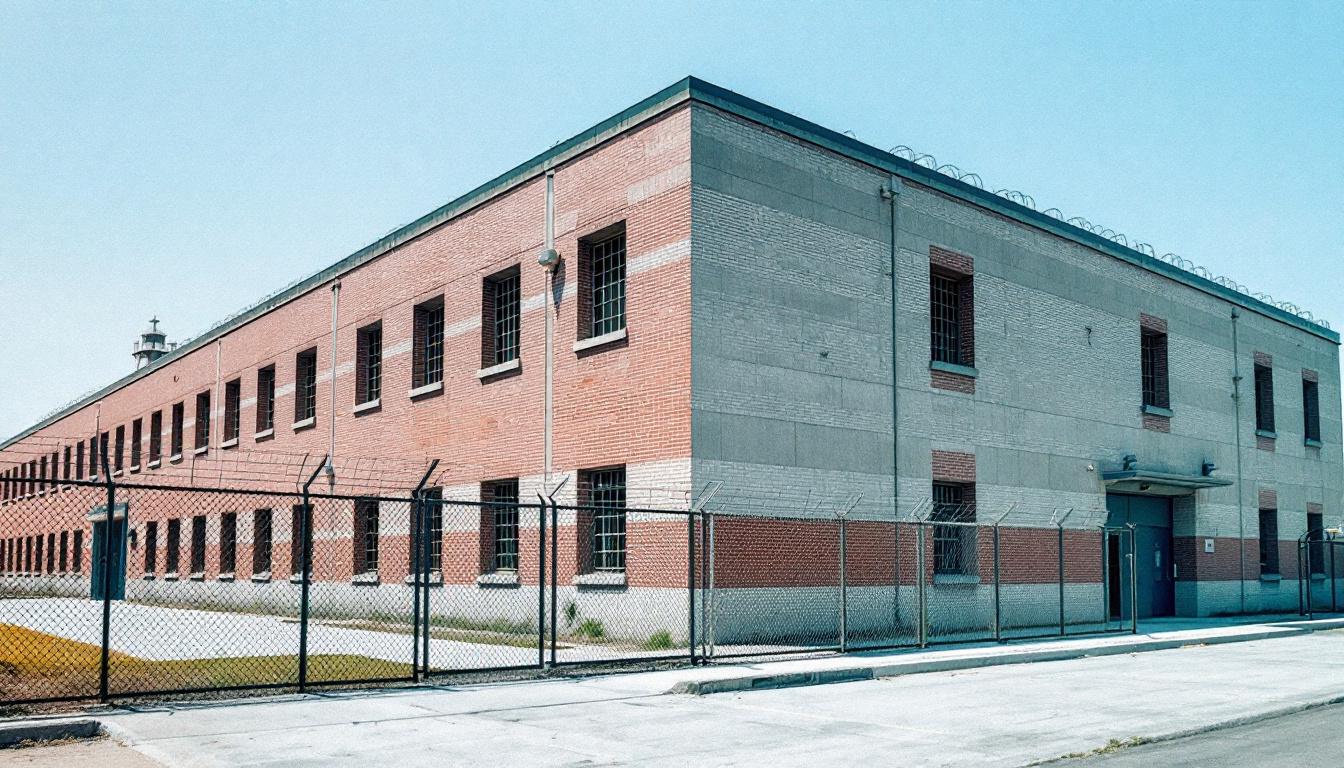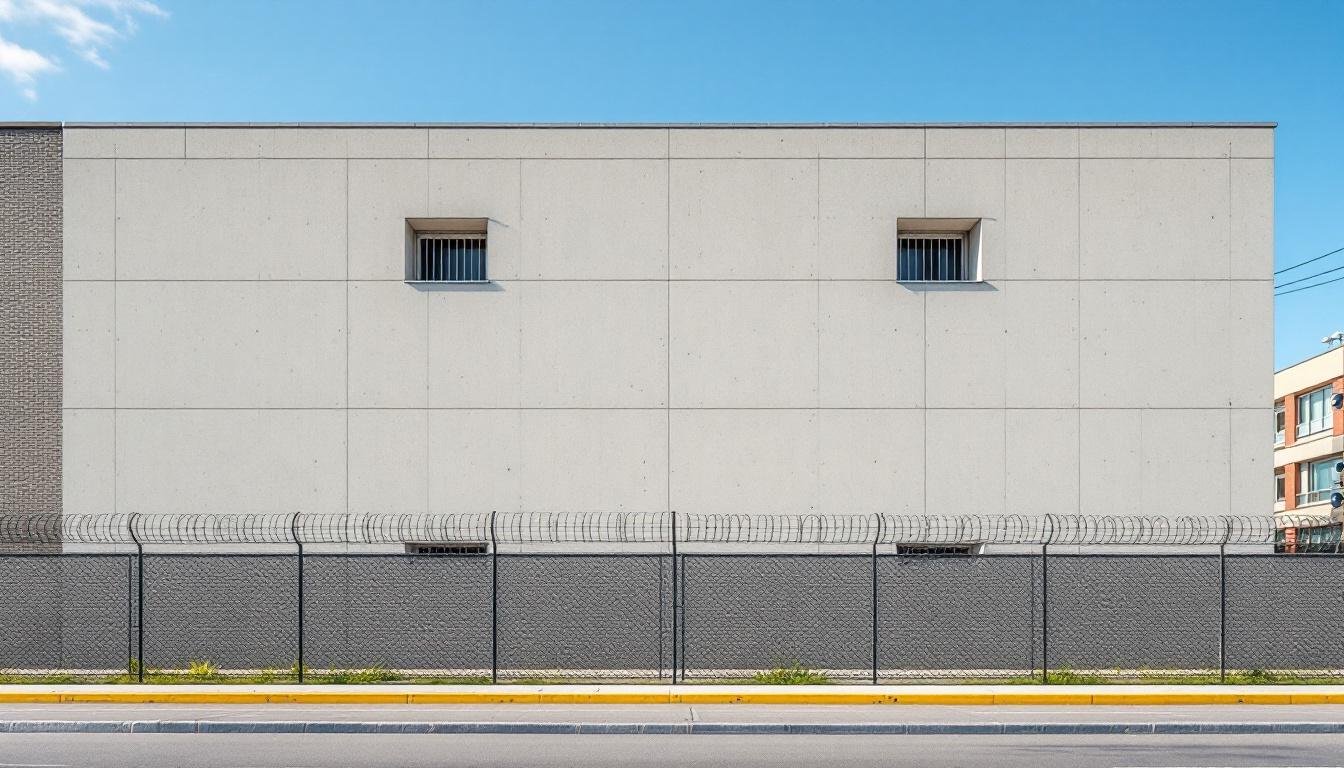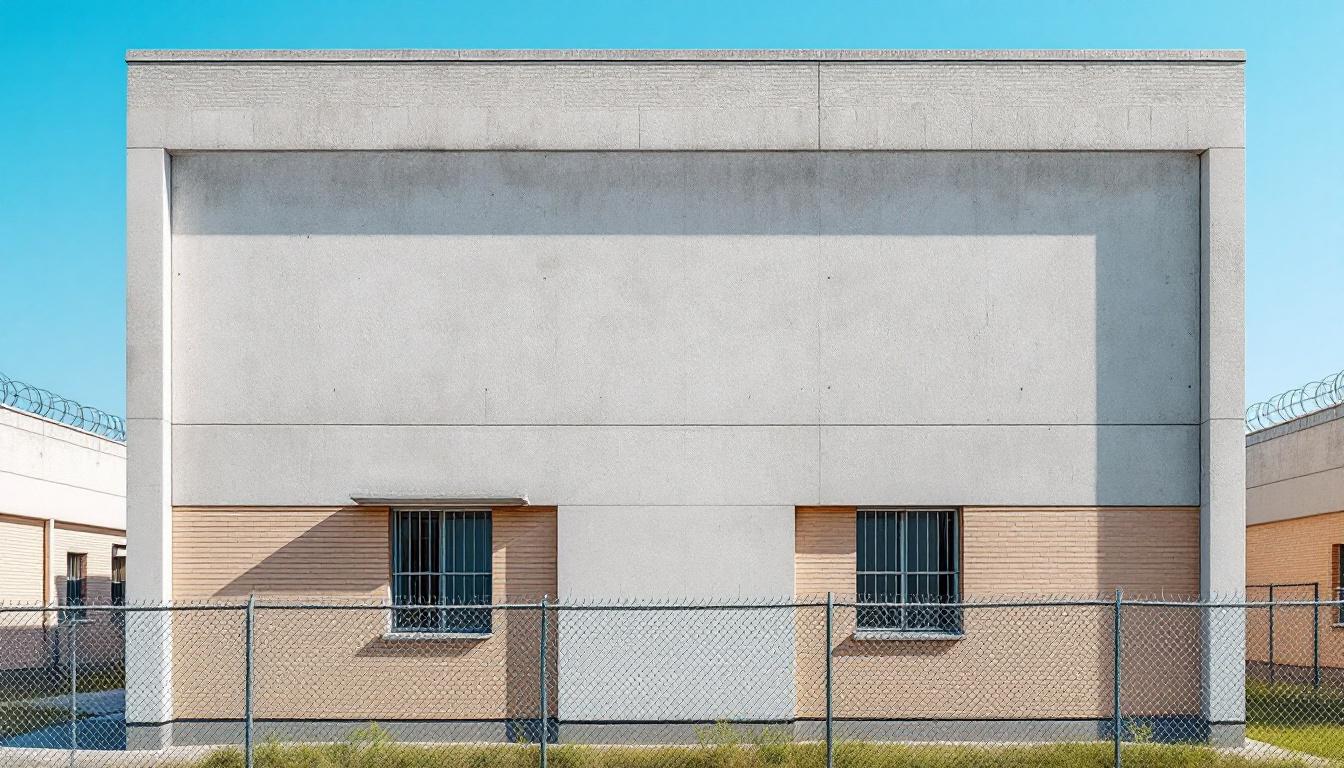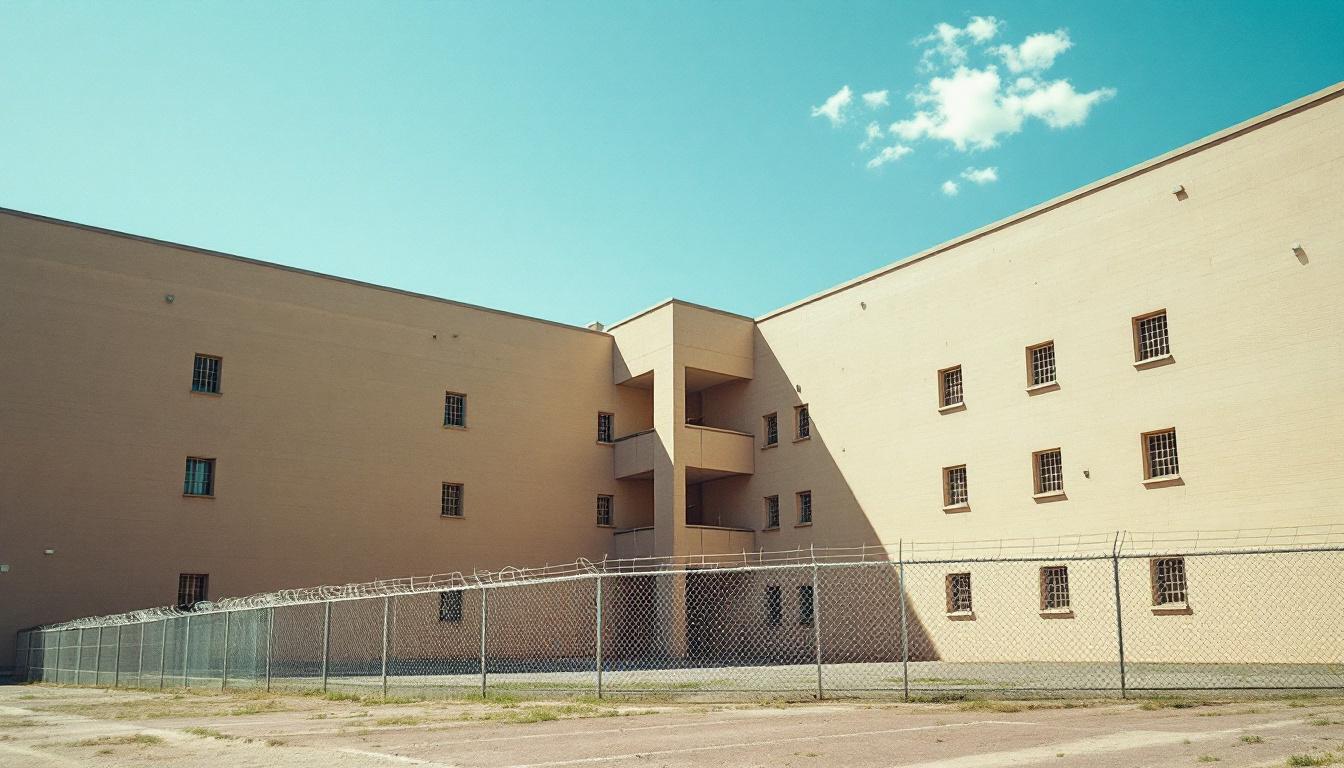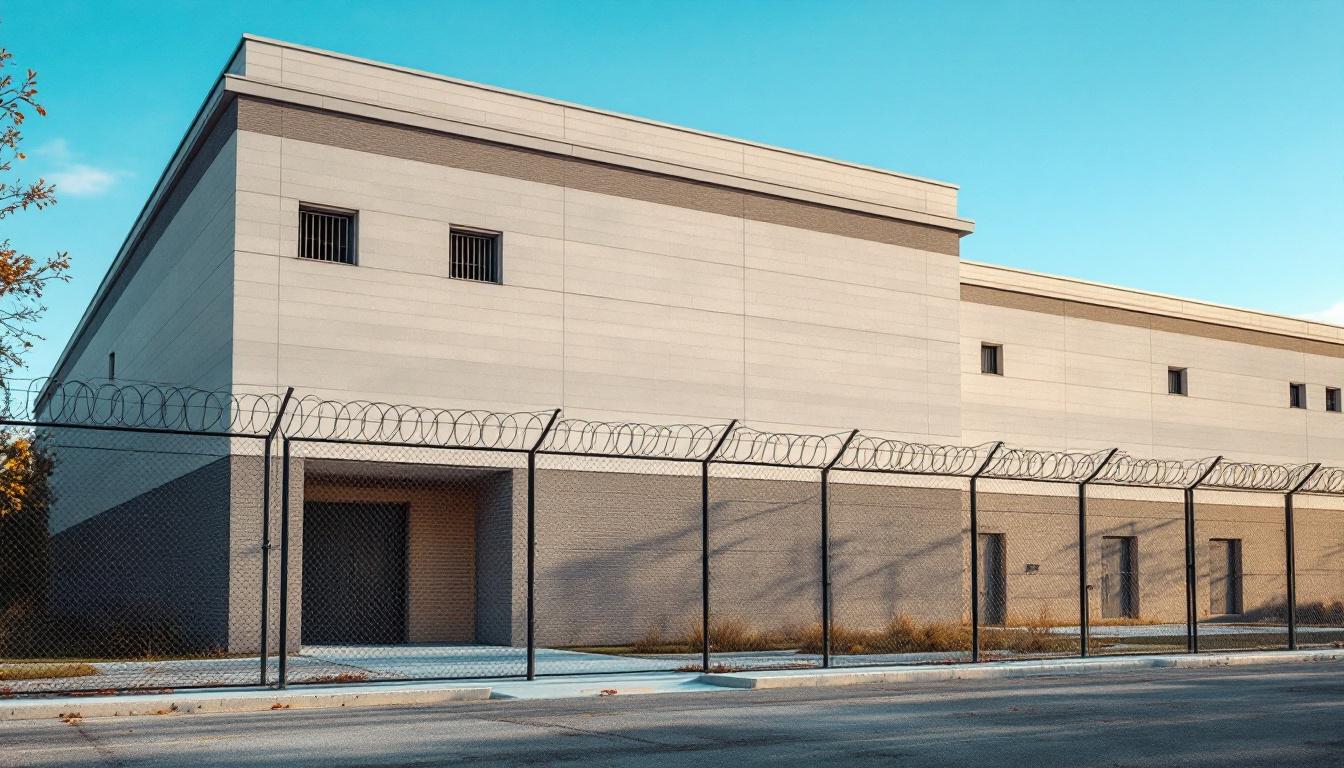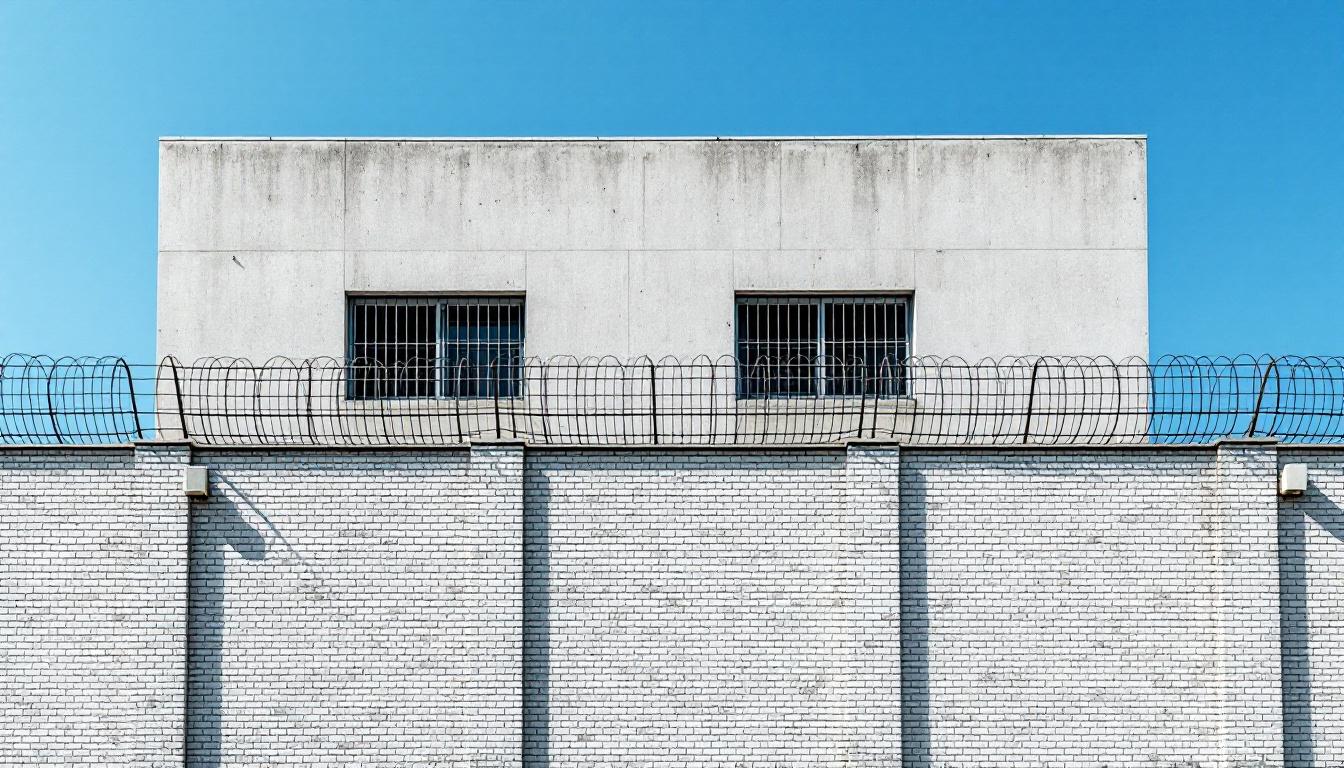
Quick Navigation
How to contact an inmate at Harlan County Detention Center
This comprehensive guide will walk you through how to connect with an inmate at Harlan County Detention Center. Follow the steps below to find an inmate and send letters and photos:
- Search for the inmate using our search tool below
- Create your account or log in to Penmate
- Write your message (up to 6,000 characters)
- Send instantly - inmates receive printed copies daily
Find an Inmate
Search for an inmate to start communicating today
Tip: You can search by first name, last name, or inmate ID number
To contact a person at Harlan County Detention Center start by searching for the person on the official facility website. Perform a search by following these steps:
- Step 1: Enter their first name and last name into the search form and click "Search"
- Step 2: Locate their inmate record
- Step 3: Write down their Inmate ID and any housing information provided
Important! Be sure to enter the person's full name. Nicknames should not be used.
How to Send Messages to Inmates

You can use your phone or computer to send emails, letters, and photos to an inmate. Messages are sent electronically to inmate tablets or kiosks at the facility. If you would like to send a message, start by searching for an inmate at Harlan County Detention Center.
Sending Photos and Postcards

A great way to send love and support to a loved one at Harlan County Detention Center is to send photos and postcards. It only takes a few minutes to send photos from your phone and it makes a huge difference. You can also mail postcards with words of support and inspiration, or design your own postcard for special moments like birthdays and holidays.
Important! Be sure not to send any explicit photos or they may not be approved by the facility. You can also use a photo printing app like Penmate to make sure your photos are printed at the correct size (4x6 or 3x5) and are mailed according to the rules and regulations of Harlan County Detention Center.
Frequently asked questions about Harlan County Detention Center
-
How long does it take to deliver a message?
If you're sending an email message your letter is usually delivered within 24-48 hours. For messages sent via mail you should expect delivery within 3-7 days. All messages will need be approved by Harlan County Detention Center.
-
How much does it cost to send a message to Harlan County Detention Center?
You can send a message free using your phone or mail a message via USPS for the price of a $0.60 stamp and envelope. You can also purchase credits or e-stamps from services starting at $1.99.
-
What services can I use to contact an inmate at Harlan County Detention Center?
Penmate
You can use Penmate to send letters and photos to an inmate from your phone. It's an easy way to stay in touch during your loved one's incarceration. Use the inmate locator to find an inmate's location and contact information, then you can send messages within a few minutes.
Securus messaging
Securus may be another option for communicating with an inmate at Harlan County Detention Center. You can create a friends and family account and purchase credits to send messages. All messages will be reviewed and must be approved by the facility.
JPay
Some county jails and state prisons may support sending messages with JPay. You must register an account with the system, find your loved one, and purchase stamps to send messages. For some locations you can also attach photos.
Smart Jail Mail
You may also check if Smart Jail Mail is available at Harlan County Detention Center. Smart Jail Mail is operated by Smart Communications and has contracted with some state and county jails. After purchasing credits, your messages and photos are sent to the facility, printed out, and then handed out to your loved one.
-
What is the mailing address of Harlan County Detention Center?
Mailing address:
Harlan County Detention Center
6000 KY-38
Evarts, KY 40828
Phone: (606) 837-0096Business hours:
- Monday: Open 24 hours
- Tuesday: Open 24 hours
- Wednesday: Open 24 hours
- Thursday: Open 24 hours
- Friday: Open 24 hours
- Saturday: Open 24 hours
- Sunday: Open 24 hours
-
What are the visiting hours at Harlan County Detention Center?
Visiting hours at Harlan County Detention Center vary by housing unit and security level. Generally, visits are scheduled on weekends and holidays, with some facilities offering weekday visits. Contact the facility directly at (606) 837-0096 or check their website for the current visiting schedule. Visits typically last 30-60 minutes and must be scheduled in advance.
-
What items are prohibited when sending mail to Harlan County Detention Center?
Prohibited items typically include: cash, personal checks, stamps, stickers, glitter, glue, tape, staples, paperclips, polaroid photos, musical or blank greeting cards, hardcover books, magazines with staples, and any items containing metal or electronics. Only send letters on plain white paper with blue or black ink. Photos must be printed on regular photo paper (no Polaroids). Always check with Harlan County Detention Center for their specific mail policies.
-
How do I send money to an inmate at Harlan County Detention Center?
You can send money to an inmate at Harlan County Detention Center through several methods: 1) Online using JPay, Access Corrections, or the facility's approved vendor, 2) Money orders mailed directly to the facility with the inmate's name and ID number, 3) Kiosks located in the facility lobby, or 4) Over the phone using a credit or debit card. Fees vary by method, typically ranging from $2.95 to $11.95 per transaction.
-
Can I schedule a video visit with an inmate at Harlan County Detention Center?
Many facilities now offer video visitation as an alternative to in-person visits. At Harlan County Detention Center, video visits may be available through services like Penmate, Securus Video Connect, GTL, or ICSolutions. Video visits typically cost $10-20 for 20-30 minutes and must be scheduled in advance. You'll need a computer or smartphone with a camera and reliable internet connection. Contact the facility for their specific video visitation policies and approved vendors.
-
What identification do I need to visit an inmate at Harlan County Detention Center?
All visitors must present valid government-issued photo identification such as a driver's license, state ID, passport, or military ID. Minors must be accompanied by a parent or legal guardian who can provide the minor's birth certificate. Some facilities require visitors to be on the inmate's approved visitation list, which may require a background check. Contact Harlan County Detention Center for specific ID requirements and visitor approval procedures.
-
How can I find out an inmate's release date?
To find an inmate's release date at Harlan County Detention Center, you can: 1) Use the online inmate search tool if available, 2) Call the facility's records department, 3) Contact the inmate's case manager or counselor, or 4) Have the inmate provide this information during a call or visit. For privacy reasons, some facilities only release this information to immediate family members.
Facility Overview
Contact Information
Harlan County Detention Center6000 KY-38
Evarts, KY 40828
Phone: (606) 837-0096
Official Website

About Harlan County Detention Center
County jail facilities serve as crucial components within Kentucky's correctional infrastructure, providing both pretrial detention and sentenced custody services that directly impact community safety and individual rehabilitation outcomes. The Hardin County Jail operates within this framework in Elizabethtown, supporting the judicial process while maintaining focus on evidence-based practices that benefit both the population services and the broader regional community.
Located in Elizabethtown, this KY correctional facility typically functions as an integral part of Hardin County's criminal justice system, housing individuals awaiting trial proceedings as well as those serving shorter sentences. The facility generally emphasizes structured programming approaches that may include educational opportunities, substance abuse counseling, and vocational training designed to support successful community reintegration. These evidence-based interventions often demonstrate measurable benefits in reducing recidivism while strengthening family connections during the incarceration period.
The county jail's operational philosophy typically centers on balancing public safety requirements with rehabilitation-focused services that prepare individuals for productive community participation. Staff generally work to maintain secure custody while facilitating access to mental health resources, religious services, and family visitation programs that support the maintenance of community ties. Through these comprehensive approaches, the facility contributes to Kentucky's broader correctional mission of promoting both accountability and positive behavioral change within the south region's criminal justice landscape.
Programs & Services
Through a comprehensive framework of supportive services, the population at Hardin County Jail receives assistance designed to address the multifaceted challenges they face while preparing for successful community reintegration. The facility's approach recognizes that meaningful change requires addressing educational deficits, vocational skill gaps, and underlying issues that may have contributed to their circumstances. This holistic philosophy ensures that participants can access resources tailored to their individual needs, fostering personal growth and development during their time in custody.
Educational services typically form the cornerstone of programming efforts, providing opportunities for the population to pursue academic advancement through literacy instruction and preparation for educational equivalency examinations. Additionally, vocational programs may supply practical skill development in various trades, equipping participants with marketable abilities that enhance their employment prospects upon release. These educational and vocational initiatives often emphasize hands-on learning experiences that build both competence and confidence, creating pathways toward economic stability and self-sufficiency.
The facility's support services encompass a broad spectrum of therapeutic and personal development programs designed to address the diverse needs of its population. Substance abuse treatment programs typically provide evidence-based interventions for individuals struggling with addiction, while religious services may offer spiritual guidance and community connection for those seeking faith-based support. Veteran services often include specialized programming for former military personnel, and transitional planning assistance helps participants develop concrete strategies for successful reentry. Furthermore, barbering and cosmetology programs may supply both vocational training and personal care services, contributing to the overall well-being and professional development of the population while fostering a sense of community within the facility.
Daily Life & Visitation
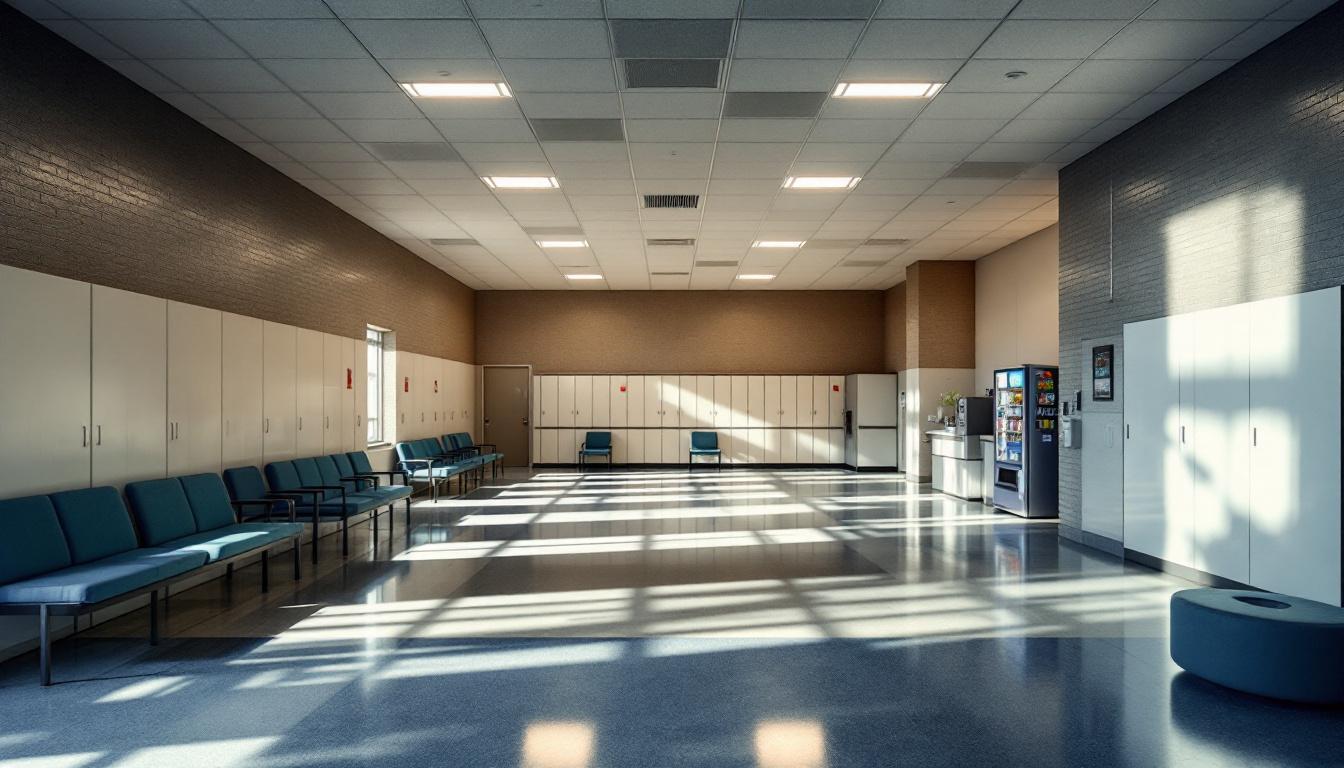
The carefully orchestrated framework of institutional operations shapes every aspect of how the population navigates their time within the facility, with structured routines now serving as the foundation for maintaining order and providing predictability. Each day typically begins with standardized wake-up procedures, followed by regularly scheduled count times that punctuate the daily rhythm, while meals are generally served at consistent intervals to supply both nutrition and temporal anchors throughout the day. The population usually participates in various work assignments that may include kitchen duties, laundry services, or facility maintenance tasks, which help maintain the institution while providing structure and purpose to daily activities.
Housing arrangements typically consist of dormitory-style units or individual cells, depending on classification levels and available space, where the population generally shares common areas while maintaining designated personal spaces for their belongings and rest periods. Additionally, personal property is usually limited to approved items that may include basic hygiene products, limited clothing, and sometimes small personal effects, while commissary services often provide opportunities to purchase additional approved items. Living conditions are generally designed to balance security requirements with basic comfort needs, and the population typically follows established protocols for maintaining cleanliness and order within their assigned housing areas.
While recreational opportunities may include television viewing in common areas, outdoor exercise periods when weather permits, and sometimes organized activities or educational programming, these activities supply important outlets for physical activity and social interaction within the structured environment. Family connections are typically maintained through scheduled visitation periods that may include in-person visits or video conferencing options, and communication often includes monitored phone calls and correspondence services. Additionally, some facilities may offer programming such as substance abuse education, life skills training, or religious services, which generally operate on established schedules and help provide constructive use of time while supporting rehabilitation goals for those preparing to return to the community.
Ready to Connect?
Start communicating with your loved one today
Search for an Inmate
